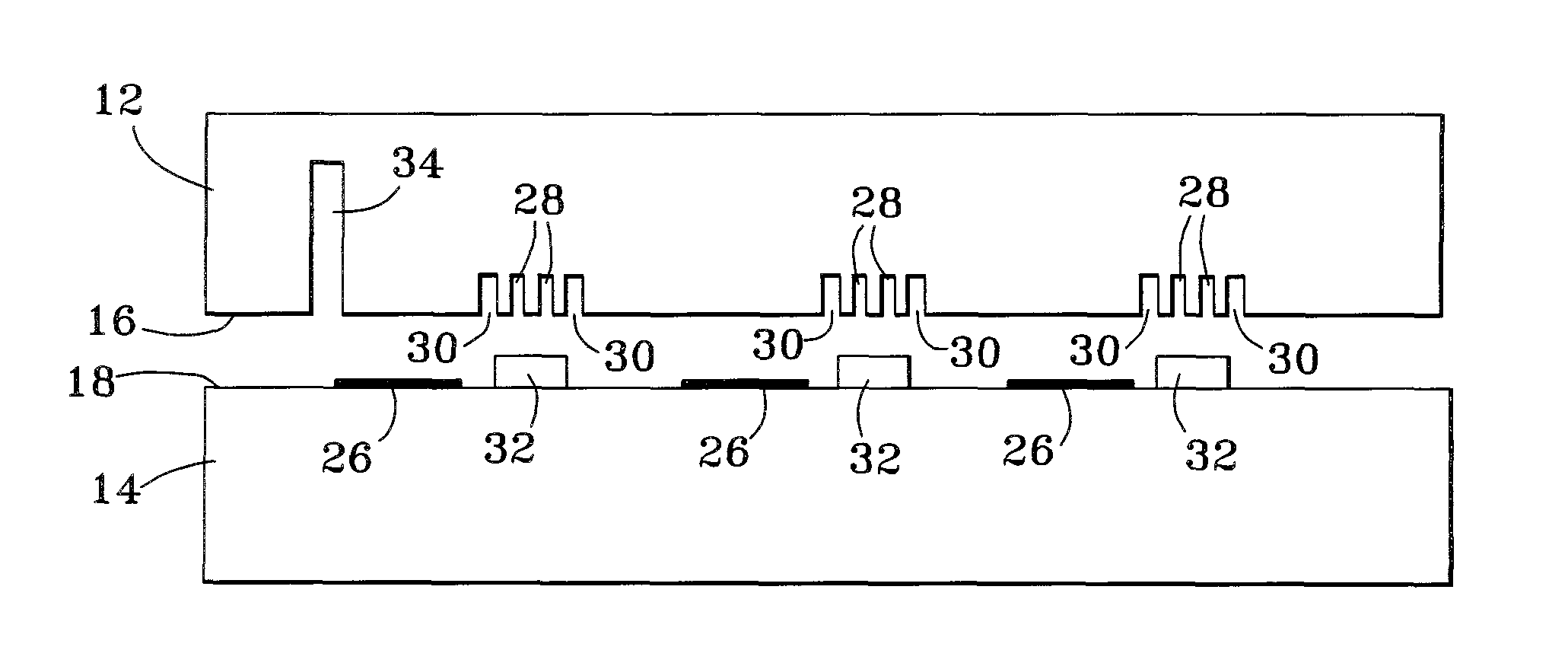Wafer bonding method and wafer stack formed thereby
a wafer and stack technology, applied in the direction of welding/cutting media/materials, manufacturing tools, welding apparatus, etc., can solve the problems of incomplete or inadequate bonding, incomplete or weak bonding, plated gold, etc., to reduce or eliminate the detrimental effect of wafer curvatur
- Summary
- Abstract
- Description
- Claims
- Application Information
AI Technical Summary
Benefits of technology
Problems solved by technology
Method used
Image
Examples
Embodiment Construction
[0027]For convenience, consistent reference numbers are used throughout the drawings to identify functionally similar elements.
[0028]FIGS. 3 through 11 represent embodiments of the invention by which electrical shorting of wafer bonding structures with neighboring conductive device and / or circuit elements can be minimized if not eliminated during a wafer bonding process. FIGS. 3 through 5 represent a first embodiment in which electrical shorting of bonding structures 36 with neighboring electrodes 26 on a CMOS wafer 14 can be minimized if not eliminated by the presence of reservoirs 28 and barriers 30 defined in a device (for example, MEMS) wafer 12 that is mated and bonded to the CMOS wafer 14 using a metal bonding method, such as (but not limited to) solder bonding, transient liquid phase (TLP) bonding, and eutectic bonding, to form a wafer stack 10 shown in FIG. 5. The invention will be described in particular reference to Au—Si eutectic bonding, though other metal bonding system...
PUM
| Property | Measurement | Unit |
|---|---|---|
| width | aaaaa | aaaaa |
| melting temperature | aaaaa | aaaaa |
| temperature | aaaaa | aaaaa |
Abstract
Description
Claims
Application Information
 Login to View More
Login to View More - R&D
- Intellectual Property
- Life Sciences
- Materials
- Tech Scout
- Unparalleled Data Quality
- Higher Quality Content
- 60% Fewer Hallucinations
Browse by: Latest US Patents, China's latest patents, Technical Efficacy Thesaurus, Application Domain, Technology Topic, Popular Technical Reports.
© 2025 PatSnap. All rights reserved.Legal|Privacy policy|Modern Slavery Act Transparency Statement|Sitemap|About US| Contact US: help@patsnap.com



